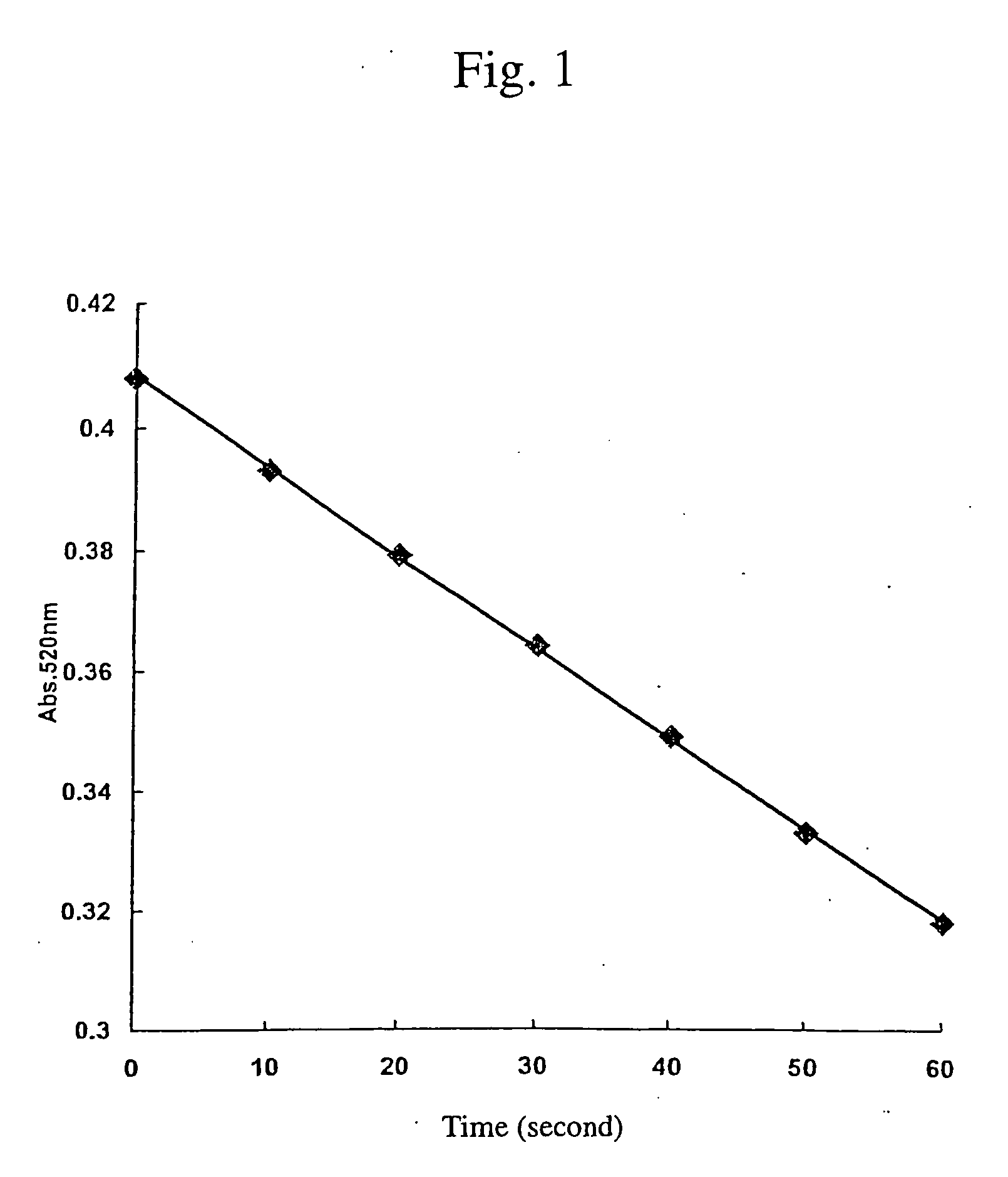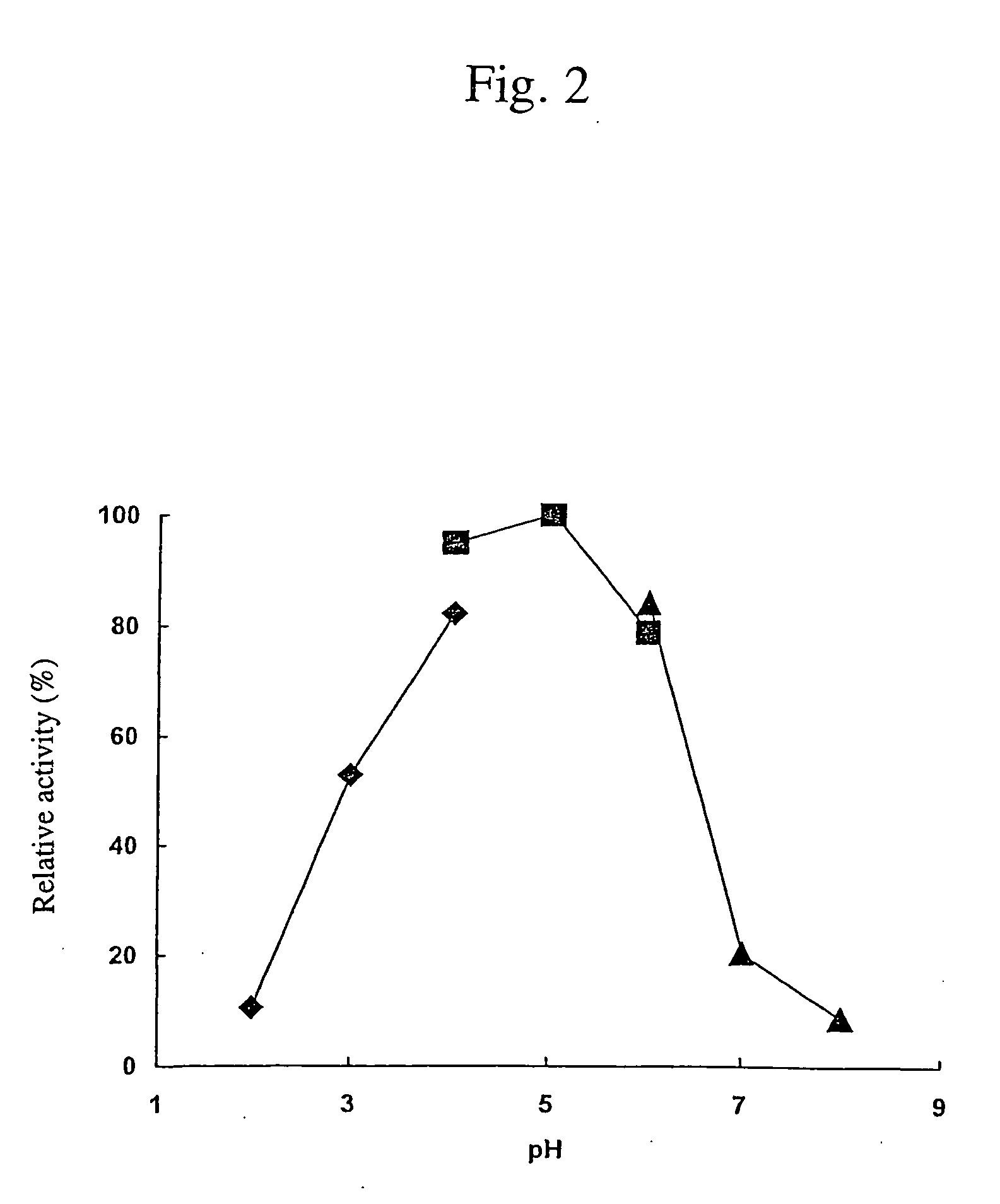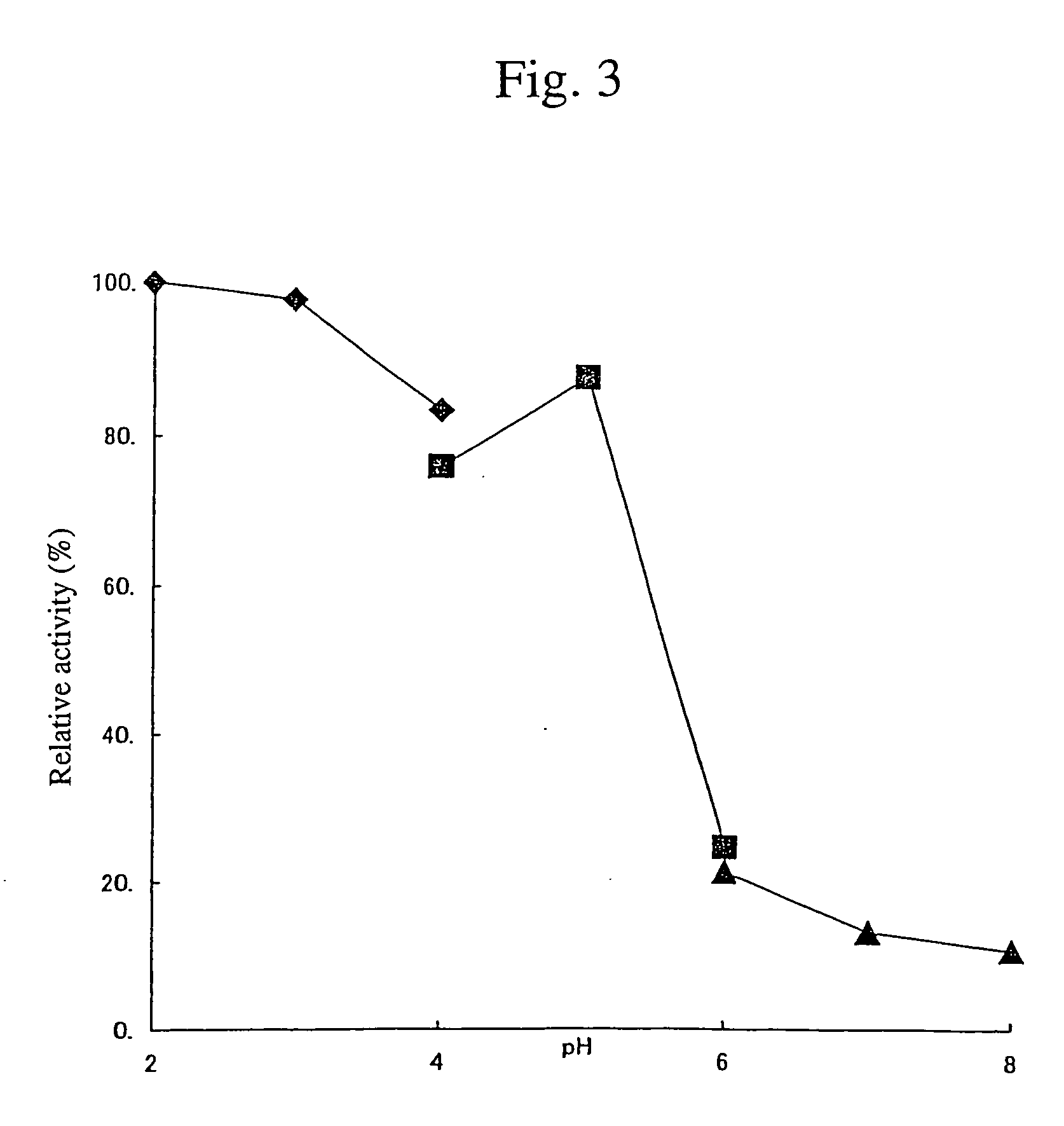Cellulose digesting enzyme gene and utilization of the gene
a technology of cellulose and enzymes, applied in the field of woodchip treatment, can solve the problems of insufficient practical use of fungus, high electric power required for grinding, and low paper strength of produced paper, and achieve the effect of controlling yield or reducing paper strength
- Summary
- Abstract
- Description
- Claims
- Application Information
AI Technical Summary
Benefits of technology
Problems solved by technology
Method used
Image
Examples
example 1
Preparation of Chromosomal DNA Library Derived from Coriolus hirsutus
[0218] A Coriolus hirsutus IFO 4917 strain was cultured in an agar plate medium, and an agar section with a diameter of 5 mm was cut out of the culture using a cork borer. It was then inoculated into 200 ml of a glucose-peptone medium (which contained 2% glucose, 0.5% polypeptone, 0.2% yeast extract, KH2PO4, and 0.05% MgSO4, and which was adjusted to pH 4.5 with phosphoric acid), followed by rotary shaking at 28° C. for 7 days. After completion of the culture, cell bodies were collected and then washed with 1 L of sterilized water. Thereafter, the cell bodies were frozen with liquid nitrogen.
[0219] 5 g of the frozen cell bodies were crushed in a mortar. The crushed cell bodies were transferred into a centrifuge tube, and then, 10 ml of a lytic buffer solution (100 mM Tris (pH 8), 100 mM EDTA, 100 mM NaCl, and proteinase K added such that it became 100 μg / ml) was added thereto, followed by incubation at 55° C. for...
example 2
Isolation of Cellobiose Dehydrogenase Gene from Chromosomal DNA Library
[0221] Clones containing cellobiose dehydrogenase genes were selected from the above chromosomal DNA library by plaque hybridization. A series of operations were carried out according to a conventional method (Sambrook et al., Molecular Cloning A Laboratory Manual / 2nd Edition (1989)). A probe used in the plaque hybridization was obtained by labeling the 3′-terminus of a synthetic oligomer having the following sequence with fluorescein, using an oligo DNA labeling kit manufactured by Amersham.
5′-TA(T / C)GA(A / G)AA(T / C)AA(A / G)ATT(T / C / A)TT(T / C / A / G)-3′(SEQ ID No. 5)
[0222] As a result, 4 positive clones could be selected from approximately 40,000 plaques. Recombinant phage DNA was prepared from the positive clones by conventional methods, and it was then digested with various types of restriction enzymes, followed by Southern hybridization using the above synthetic DNA. As a result, two different clones which hybridi...
example 3
Isolation of Cellobiohydrolase I-1 Gene from Chromosomal DNA Library
[0225] Plaque hybridization was carried out in the same manner as in Example 2. A probe used herein was obtained by labeling with fluorescein the 3′-terminus of a synthetic oligomer having the following sequence prepared based on the nucleotide sequence of the cellobiohydrolase I gene isolated from other organisms, using an oligo DNA labeling kit manufactured by Amersham.
(SEQ ID No. 6)5′-GA(T / C)ATCAAGTT(T / C)ATC(A / G)ATGG-3′
[0226] As a result, 2 positive clones could be selected from approximately 40,000 plaques. Recombinant phage DNA was prepared from the positive clones by conventional methods, and it was then digested with various types of restriction enzymes, followed by Southern hybridization using the above synthetic DNA. As a result, a clone as which hybridizes with probe was observed as a single DNA band of 3.9-kbp, in a fragment obtained by digestion with restriction enzymes PstI and NheI.
[0227] The above...
PUM
| Property | Measurement | Unit |
|---|---|---|
| Fraction | aaaaa | aaaaa |
| Fraction | aaaaa | aaaaa |
| Fraction | aaaaa | aaaaa |
Abstract
Description
Claims
Application Information
 Login to View More
Login to View More - R&D
- Intellectual Property
- Life Sciences
- Materials
- Tech Scout
- Unparalleled Data Quality
- Higher Quality Content
- 60% Fewer Hallucinations
Browse by: Latest US Patents, China's latest patents, Technical Efficacy Thesaurus, Application Domain, Technology Topic, Popular Technical Reports.
© 2025 PatSnap. All rights reserved.Legal|Privacy policy|Modern Slavery Act Transparency Statement|Sitemap|About US| Contact US: help@patsnap.com



